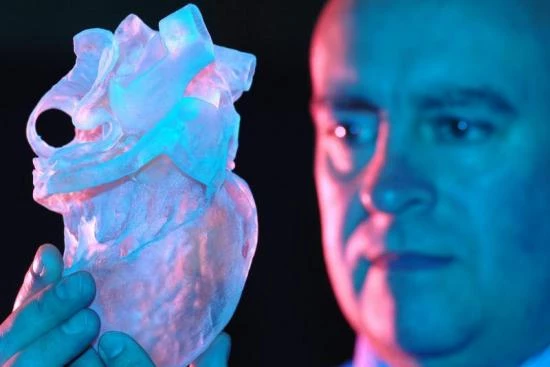3D bioprinting is a revolutionary technology that enables the fabrication of functional tissues and organs using living cells and biomaterials (bio-inks). It offers promising prospects for the repair of severe skin lesions and the preparation of in vitro models. It can also be used to create skin substitutes for transplants.
This highlights that 3D bioprinting in Turkey is a field of growing interest, with ongoing research and development.
We're Here to Help.

Patients suffering from :
- Severe skin lesions
- Burns
- Dermatological diseases
- Risk of immunological rejection
- Infection
- Poor tissue integration
- Adverse reactions to biomaterials
- Skin grafting
- Cell Therapy
- Growth factor therapy
- Tissue engineering therapy
What is 3D bioprinting?
The skin is the largest organ in the human body, having a crucial role in protecting against infection, regulating body temperature, and providing tactile sensation. However, severe skin lesions such as burns, ulcers, and traumatic injuries can lead to serious complications. As they can be life-threatening if not properly treated.
Current treatments, such as grafts from the patient's skin (autologous) or from an external source (allogeneic),have major limitations in terms of availability and compatibility. This is where 3D bioprinting of skin comes in as an innovative technology that offers new prospects for skin regeneration.
How does biological tissue printing work in Turkey?
3D bioprinting involves creating three-dimensional skin structures by superimposing layers of living cells and specific biomaterials.
Basic principles of tissue regeneration
The cells used can be keratinocytes, fibroblasts, or stem cells derived from the patient's skin. Biomaterials also provide a suitable environment for cell growth. They can be in the form of :
- Bio-inks
- Hydrogel matrices
- Biofilms
3D bioprinting can accurately reproduce the multicellular structure of the skin, including:
- Epidermis
- Dermis
- Hypodermis
- The different cell layers present in each region
In addition, vascularization, which is essential for tissue survival, has also been incorporated into bioprinted skin models through the use of bio-inks containing endothelial cells.
Printing process
Bioprinting is a complex process involving several stages, such as :
Data acquisition
First, precise three-dimensional data of the skin area to be printed are collected. This can be achieved using medical imaging techniques such as magnetic resonance imaging (MRI) or computed tomography (CT).
Preparation of live cells and biomaterials
The live cells required for 3D bioprinting, such as keratinocytes and fibroblasts, are either allogeneic or autologous. The latter are harvested from bone marrow or obtained by blood apheresis. They are then cultivated and multiplied in the laboratory to obtain sufficient quantities. Similarly, biomaterials such as biocompatible hydrogels are prepared to serve as structural supports for bioprinting.
Bioprinting at our clinics in Istanbul, Turkey
Living cells and biomaterials are loaded into separate cartridges and injected into the 3D printer's print nozzles. The printer must first be configured and optimized according to the specifications of the desired skin model. Using a layered deposition process, the cells are arranged in a specific organization to reproduce the different skin layers.
Clinical use
Once the printed skin structure has matured to meet quality and safety standards, it can be used for clinical purposes.
Bioprinting applications at our partner research centers in Turkey
3D skin bioprinting offers a wide range of potential clinical applications at our partner facilities in Turkey.
These include:
- The production of in vitro models for the skin disease study
- Evaluation of drug efficacy
- Research into wound healing mechanisms
- Skin grafts for patients requiring tissue regeneration
What's more, 3D bioprinting of skin in Turkey could revolutionize the field of skin grafting by offering personalized, compatible skin substitutes for patients.
3D skin bioprinting in Turkey
Indeed, our partner institutions in Turkey are taking an active interest in bioprinting and investing in the research and development of this promising technology. With their solid medical infrastructures and expertise in related fields, they are well-placed to contribute to the advancement of skin bioprinting and its clinical use shortly.
Share this page









